I haven’t posted for a few days because I’ve been in Montana for most of the past week. I have many images from that trip and hopefully some of them will appear here in the near future.
But for now I’d like to report on another grebe behavior I photographed recently. This time it will be the Western Grebe, rather than the Clark’s Grebes in two of my recent posts. The two species are very similar and most easily distinguished by differences in bill color (Clark’s is bright yellow to orange-yellow while the Western’s bill is yellow to dull olive colored) and coloration around the eye (Clark’s is white surrounding the eye while the Western is dark around the eye).
Both species rarely fly except during migration. In fact for much of the year they are incapable of flight because their flight muscles atrophy soon after arriving at their breeding grounds. So it’s my working theory that this might explain part of the reason why these grebes do so much wing flapping and stretching while sitting on the surface of the water – to excercise their relatively unused wings.
Note: In many of these images I was too close to the birds to get an aesthetically pleasing composition so in most cases the birds will be too tight in the frame. But I think they show well the behavior I’m describing.
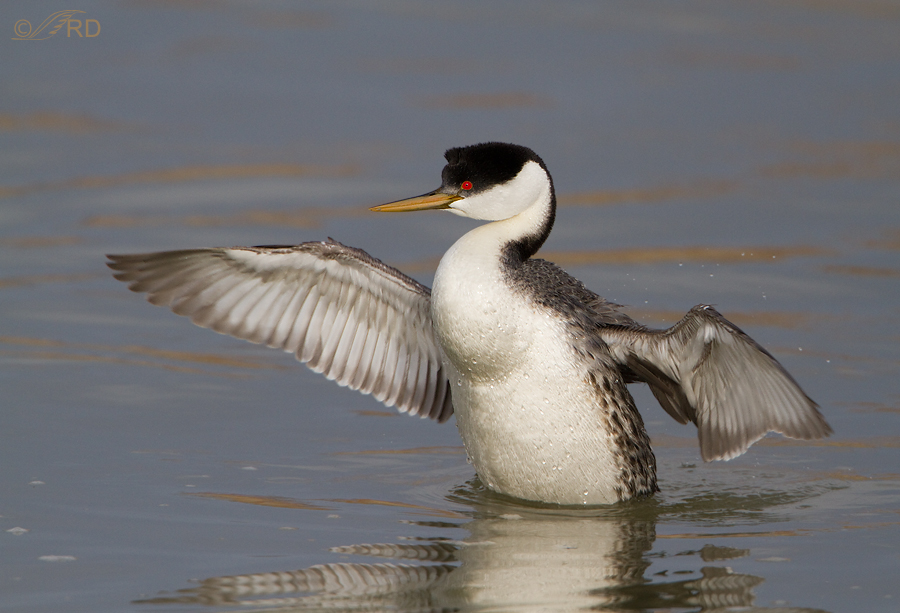
1/2000, f/10, ISO 500, 500 f/4, 1.4 tc
This Western Grebe is in the middle of a wing-flap. They look so lithe and streamlined while sitting on the surface of the water that I’m always surprised by their chunky appearance when they rise out of the water to perform this common ritual.
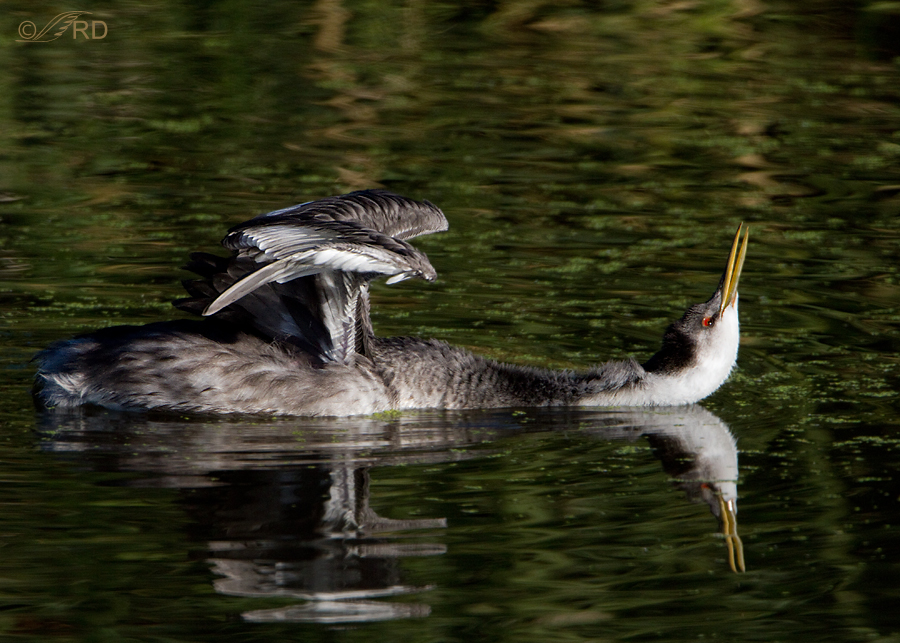
1/2500, f/8, ISO 500, 500 f/4, 1.4 tc
This is a stretching pose that in my experience is fairly unique to these grebes.
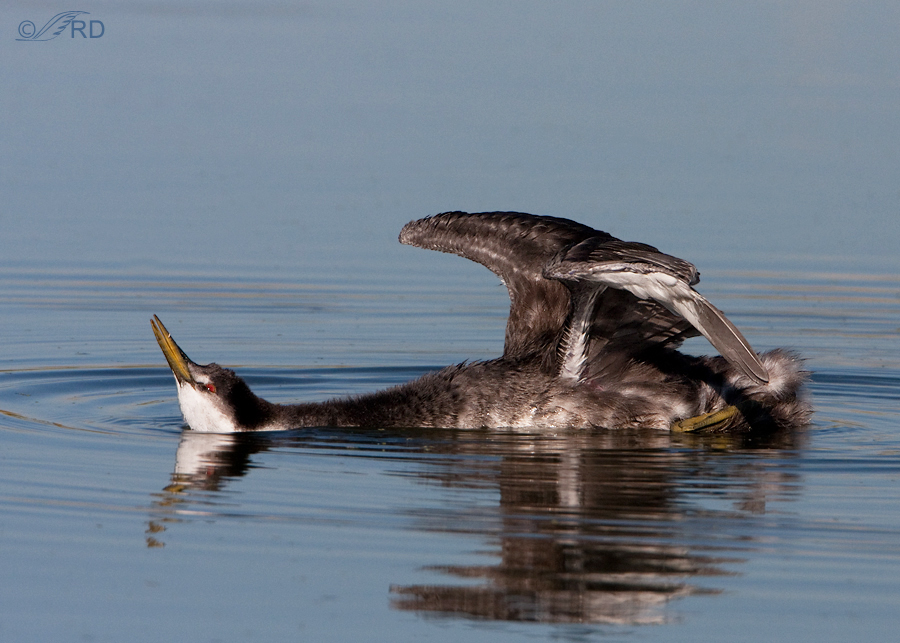
1/2000, f/10, ISO 400, 500 f/4, 1.4 tc
Here it is again. Different bird, different year but the very unique poses are virtually identical.
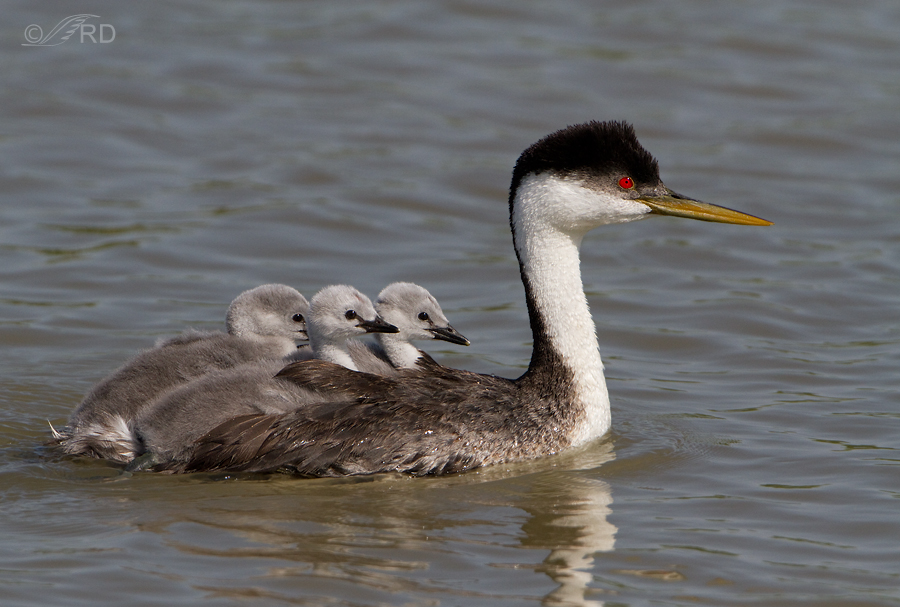
1/2500, f/8, ISO 500, 500 f/4, 1.4 tc
You may be wondering what these stretches and wing-flap photos have to do with the “dumping their chicks” portion of my title. Both the male and the female parents share in brooding the chicks on their backs. When those chicks get larger it’s quite a load to bear as you can see in this image. There’s not enough room for even three chicks at this point and sometimes there’s four of them.
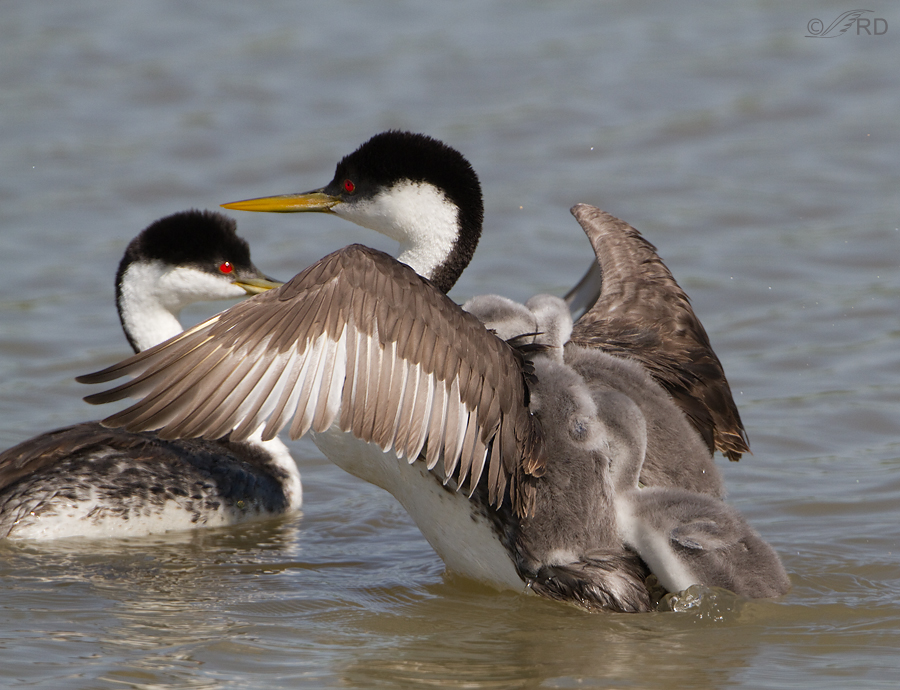
1/2000, f/7.1, ISO 400, 500 f/4, 1.4 tc
So when one of the parents has had enough brooding for the moment it “dumps” the chicks by doing a wing flap. The combination of the raised body position and the flapping of the wings…
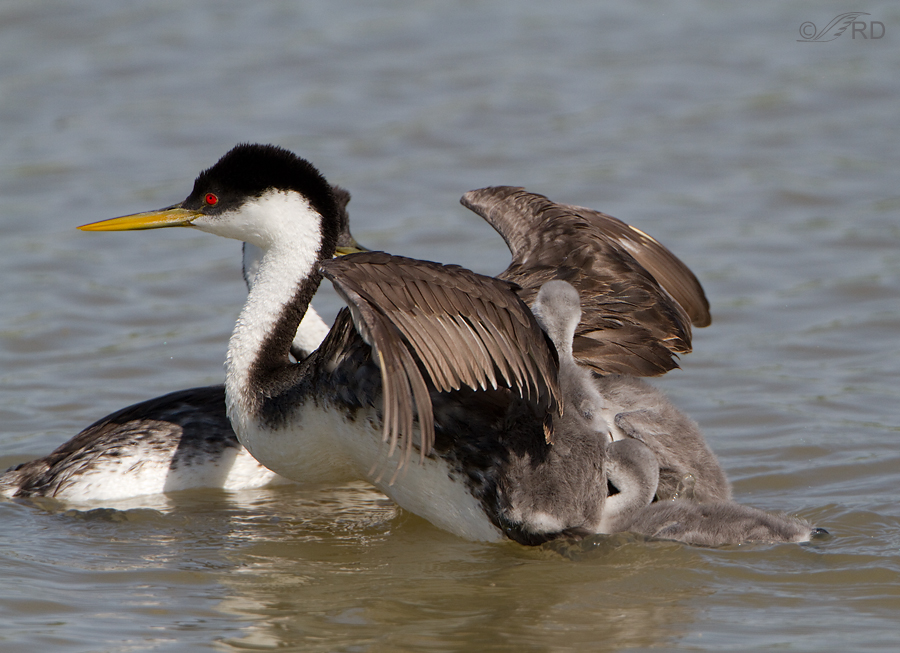
1/1600, f/7.1, ISO 400, 500 f/4, 1.4 tc
dislodges the chicks and they go sliding down the back of the parent…
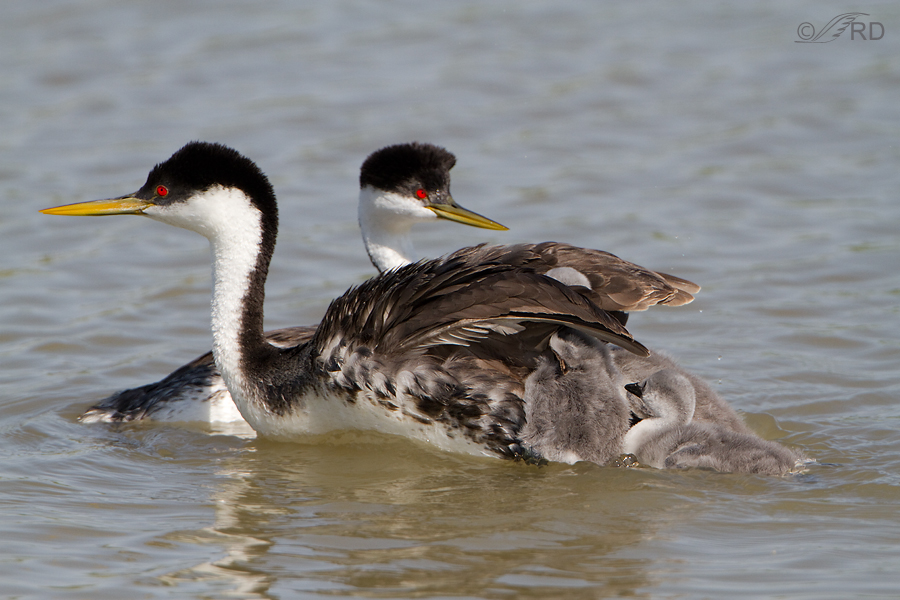
1/1600, f/7.1, ISO 400, 500 f/4, 1.4 tc
and into the water. This is usually done with the other parent nearby and the chicks then go scurrying to climb aboard the second parent while the first adult gets a much needed reprieve.
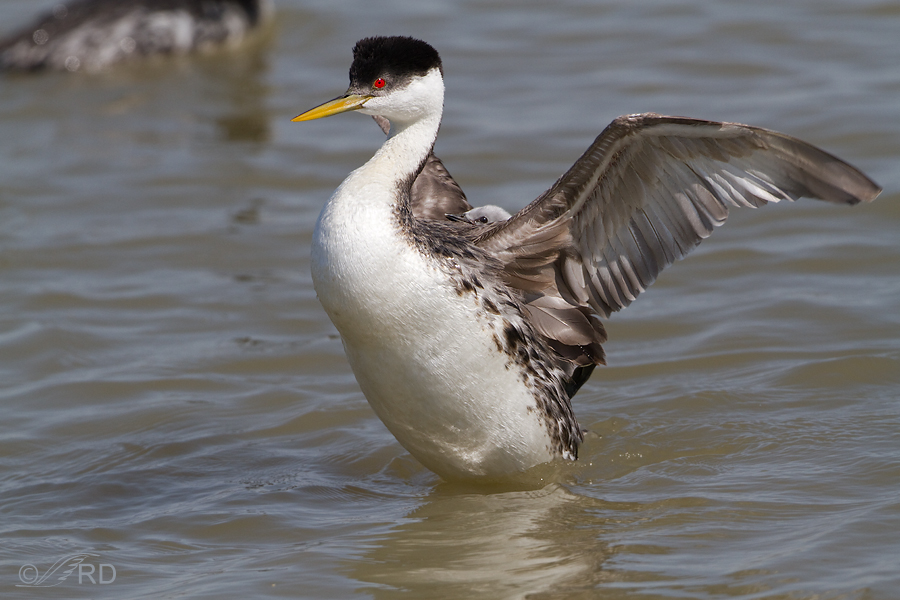 1/3200, f/6.3, ISO 400, 500 f/4
1/3200, f/6.3, ISO 400, 500 f/4
Here’s another example of the same behavior from a different angle. This time there’s only one chick and it tries mightily to hang on…
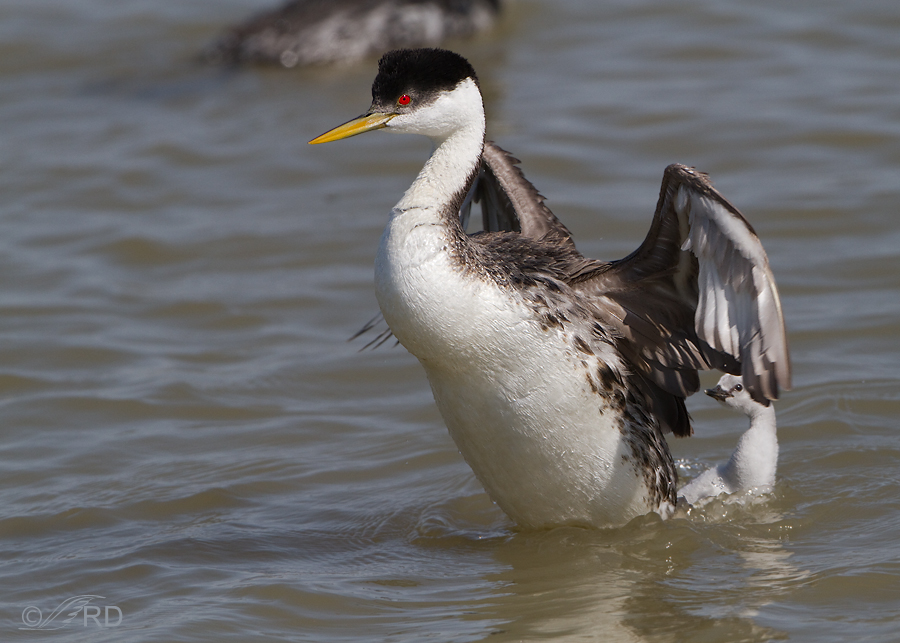
1/3200, f/6.3, ISO 400, 500 f/4
but it too…
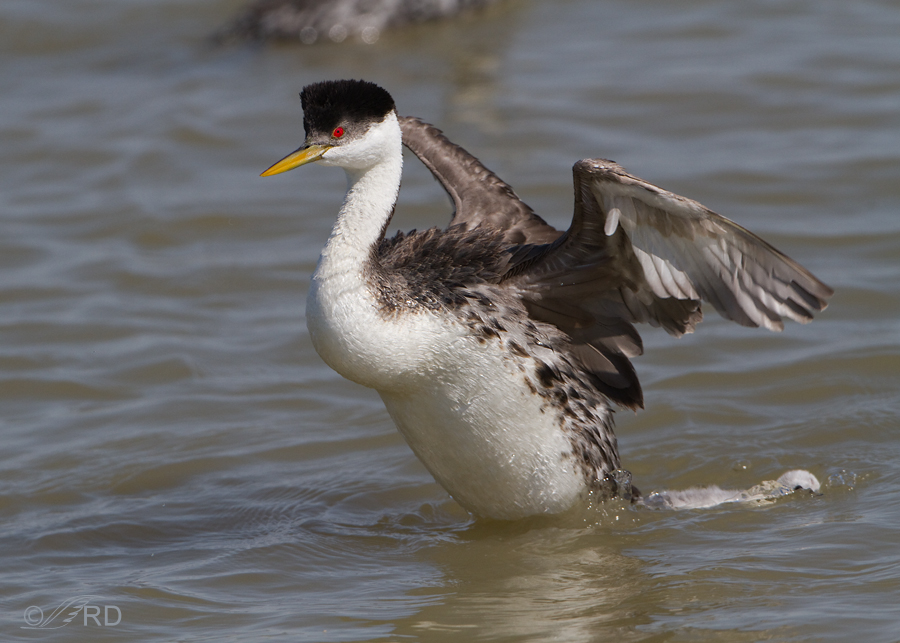
1/3200, f/6.3, ISO 400, 500 f/4
ends up in the drink.
This is a well documented behavior in both Western and Clark’s grebes. From Birds of North America, Online – “Both parents brood, male tends to carry newly hatched young more frequently than female. At end of brooding bout parent rises up in water and flaps wings, young fall off and move to other parent.”
For me it was an entertaining behavior to watch and photograph.
Ron


I love to read your posts and see your photos because I always learn something new!
Thank you Tana. I learn a lot with my own posts too – from the photography and from the post preparation.
Ron, I really enjoyed reading your great insight on the interesting behavior and spectacular photos showing the behavior in the most artistic forms. I have never heard of this behavior before. What a privilege to be able to witness it through your beautiful photos and blog post. Thank you for sharing! The 3 chicks on the back photo is wonderful with catchlights on all 4 of them.
Thanks very much Tin. I’m glad you noticed the four catchlights. I thought that was pretty neat also.
Love the recent focus on the grebes Ron! And what fascinating behavior. One of the things I enjoy most about your work is that you capture the most striking images, and couple them with informative discussion on behavior. It certainly is about not only the art of photography, but your intense intrigue and insight into the world of birds. Such a great contribution. Thanks again for your great work.
Thank you Bryce. I’m delighted that you appreciate the behavior discussion.
Wonderful, wonderful shot, Ron. I especially like that 4th image. What a cutie!
Fabulous photos and interesting, instructive commentary.
Thank you Nina.